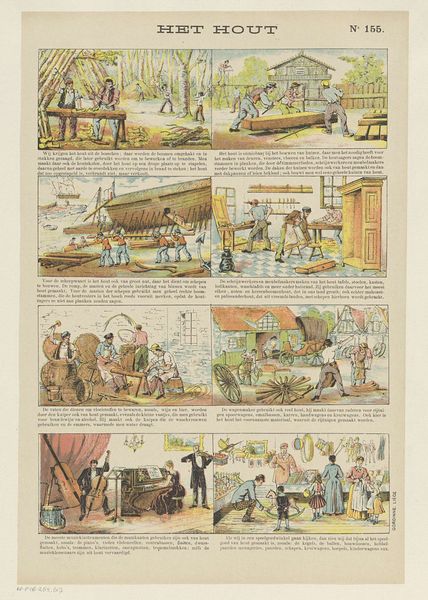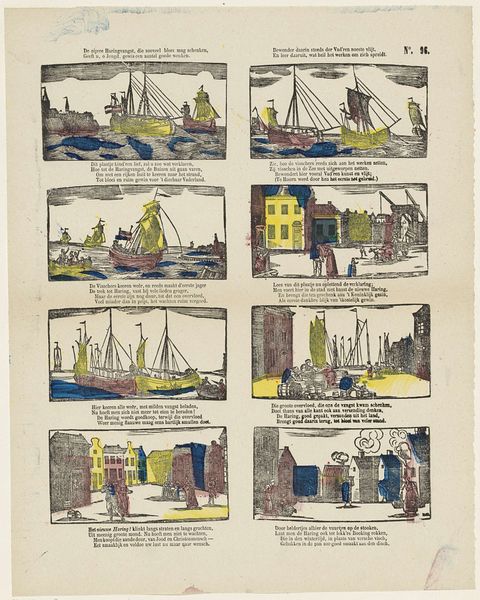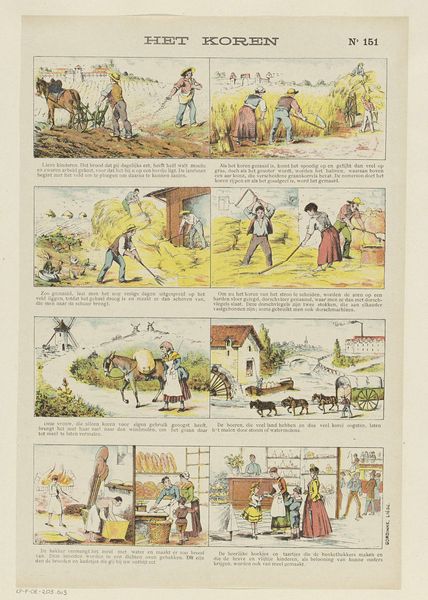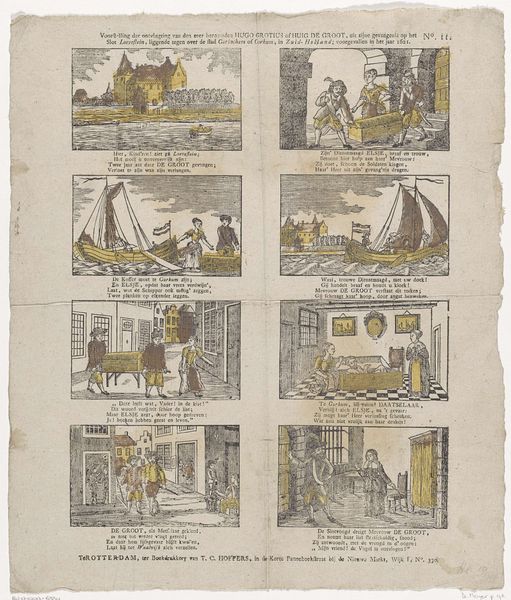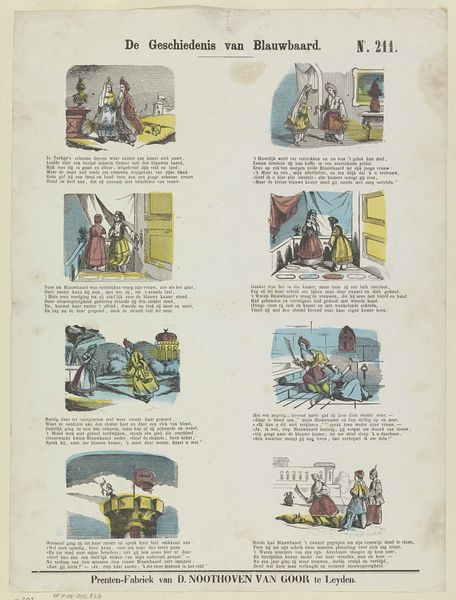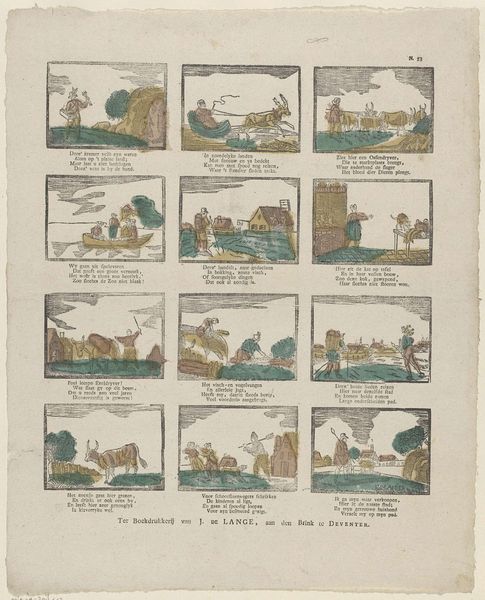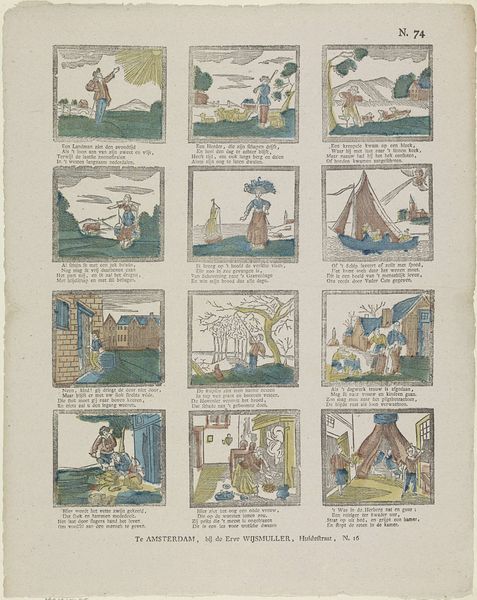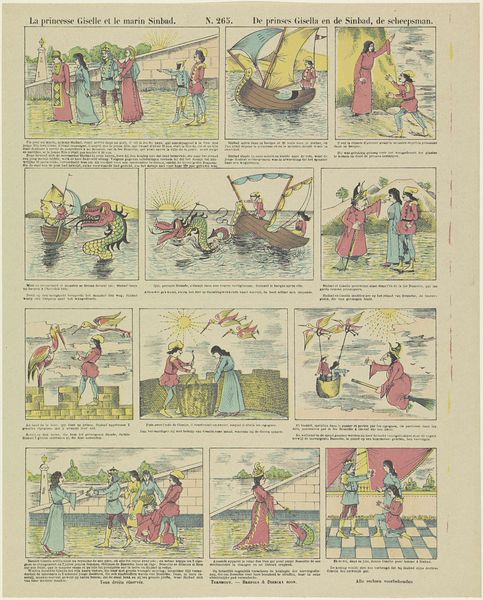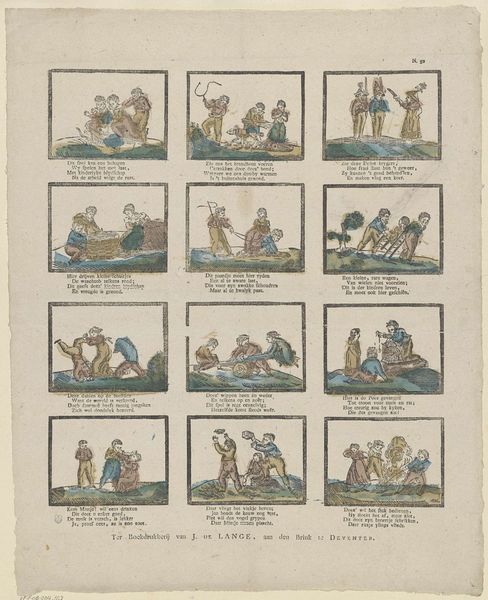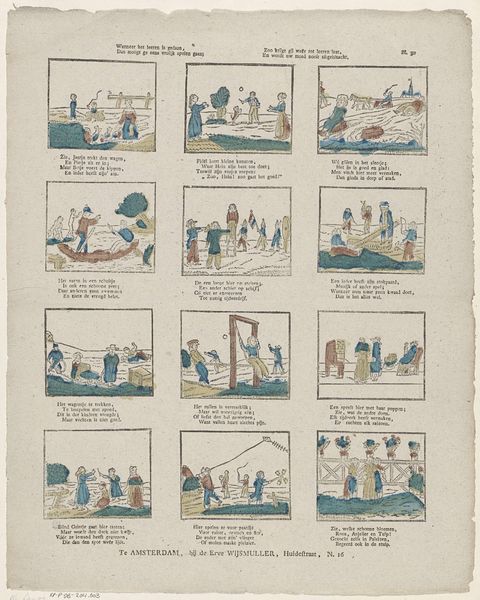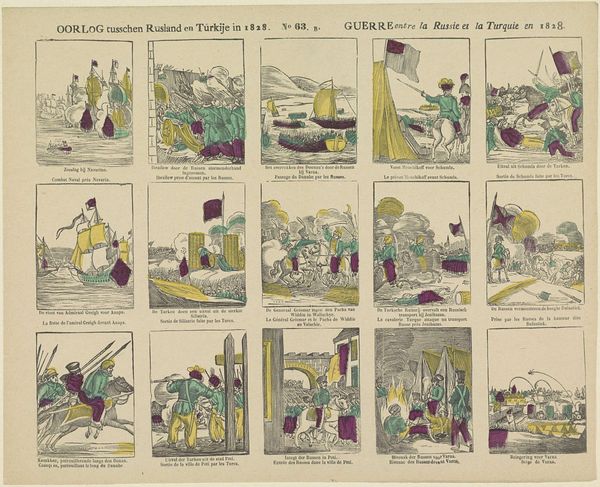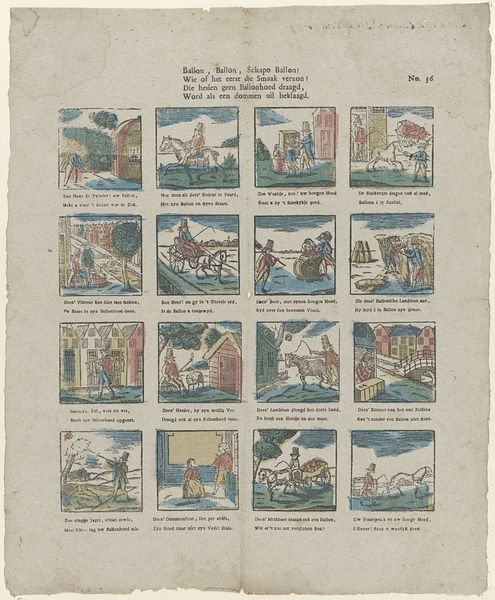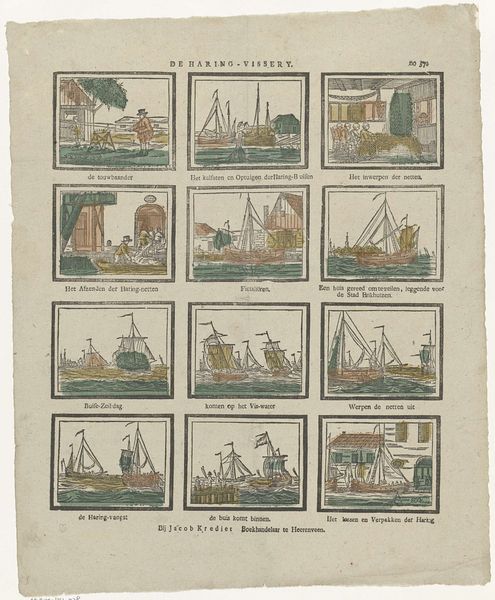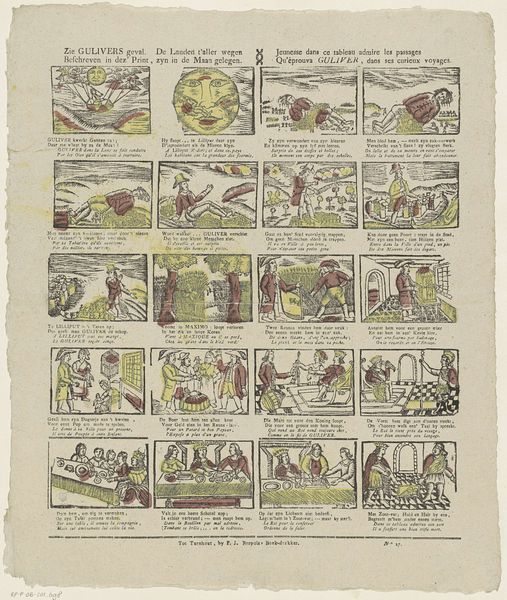
#
narrative-art
# print
#
genre-painting
Dimensions: height 399 mm, width 270 mm
Copyright: Rijks Museum: Open Domain
Curator: A. de Ker's print, “De visscherij”, which roughly translates to "The Fishery," created between 1894 and 1959 and held here at the Rijksmuseum, offers a visual narrative of the fishing process. Editor: My immediate thought is how neatly everything is laid out in this almost comic strip format, but I’m also struck by the intense labor on display here, not just the act of fishing, but also the processing, sorting, and even whale hunting. Curator: Exactly, it provides a lens into the socioeconomic conditions and the intersectional labor roles, divided by gender and age, essential to a coastal community during that era. Notice how the scenes progress from the sea to the shore, creating a clear delineation of work spheres. The print medium also suggests this was widely disseminated among a certain social class. Editor: Looking at the images focusing on the labor on land, with groups of people working communally around vast amounts of fish, brings attention to both materiality and quantity. The process seems intensive; salting, gutting, smoking; it reveals an intricate local economy focused on one species, as it sustained a community, while exposing the precariousness of labor. It makes me think about supply chains of today, that rely heavily on this history of manual work. Curator: Thinking intersectionally, the absence of any reference to social structures—power dynamics in this instance— is significant. The print presents this intense work with a flattened hierarchical view. Editor: Yet, the last two panels portraying the whale hunt bring questions of labor back. There's a darker side. I notice the harpoon, an industrial means of extraction, and immediately think of ecological consequences. It points to questions about exploitation. It's a disturbing conclusion to an otherwise seemingly benign narrative. Curator: The print, as a material object in itself, acts as an important artifact, reflecting dominant cultural attitudes towards labor, gender, and our relationship to the natural world, encouraging discussions and further investigations into each. Editor: Ultimately, examining these sequential depictions has reinforced the cyclical relationships among the labor, processing, and broader context, illustrating a local dependence within complex economic and cultural frameworks, even extending as far back to include whaling.
Comments
No comments
Be the first to comment and join the conversation on the ultimate creative platform.
